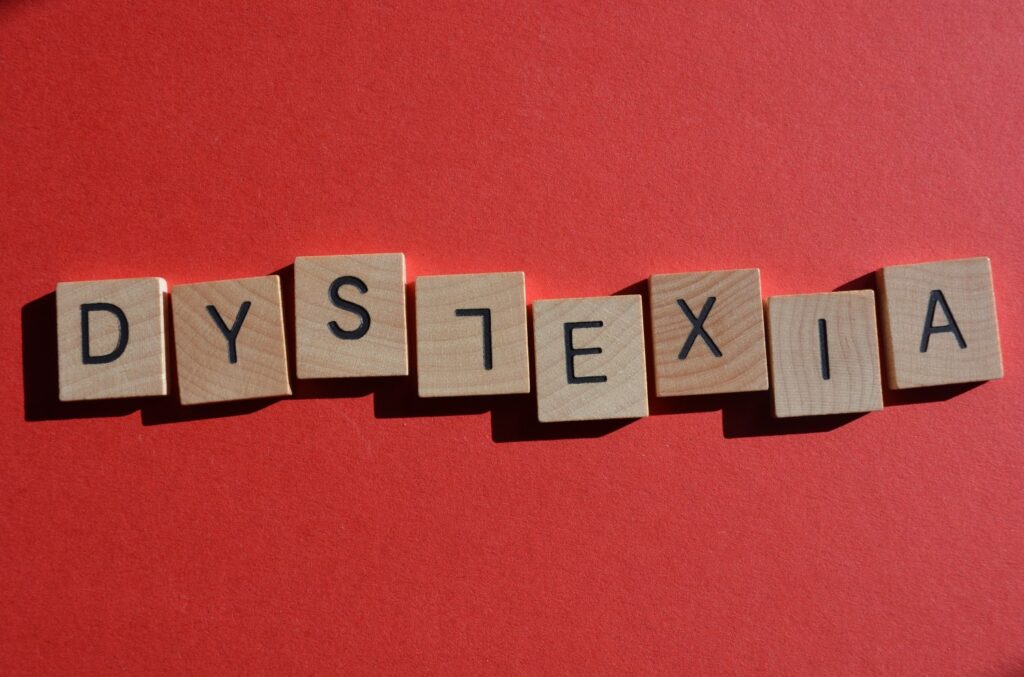Teachers possess a remarkable ability to shape the lives of their students, nurturing talents and inspiring them to overcome challenges. Let’s discuss how teachers help Dyslexic students.
One such challenge is Dyslexia, a learning difference that affects many students. Dyslexia can hinder academic performance and self-esteem, but with the right support, dyslexic students can unlock their potential.
This article explores strategies for teachers to create an inclusive classroom environment, including tailored instruction, fostering a positive mindset, and utilizing assistive technologies.
Collaboration between teachers, parents, and professionals is crucial. By equipping teachers with practical strategies, we can empower them to create enriching learning environments for dyslexic students, promoting their success and embracing their unique talents.

Common Signs/Symptoms Of Dyslexia
Teachers should be aware of the common signs and symptoms of dyslexia students may exhibit in the classroom.
One of the primary indicators is difficulty with reading. Dyslexic students often struggle decoding words, resulting in slow or inaccurate reading. They may find recognizing familiar words challenging and require more time and effort to read and comprehend texts.
Another common sign is poor spelling. Dyslexia can affect a student’s ability to spell words correctly, leading to frequent errors and inconsistent spelling patterns. These students may struggle to understand and apply phonics rules and struggle with phonemic awareness.
Writing difficulties are also prevalent among dyslexic students. They may need help organizing their thoughts on paper, structuring sentences, and expressing ideas coherently. Dyslexia can impact their ability to translate their thoughts into written form.
Dyslexic students often exhibit slow reading fluency. Their reading speed may be noticeably slower, and they may hesitate or stumble over words.
Furthermore, reversals and inversions of letters, numbers, or words are another telltale sign of Dyslexia. Students may confuse similar-looking letters such as “b” and “d” or reverse the order of letters within a word. These visual processing difficulties can contribute to challenges in reading and writing accurately.
Difficulties with sequencing can also be observed in dyslexic students. They may struggle with understanding and recalling the correct order of letters, numbers, or events. This can impact their ability to follow instructions, organize their thoughts, and remember information accurately.
Additionally, Dyslexia can affect working memory, leading to difficulties in remembering and recalling information. Students may struggle to retain instructions, follow multi-step tasks, or retrieve previously learned material from memory.
How Teachers Can Identify And Assess Dyslexia
Identifying and assessing dyslexic students in the classroom requires a comprehensive approach that combines observation, informal assessments, and collaboration with other professionals. Here are some strategies that teachers can employ:
Regular Observation.
Teachers should observe students closely, looking for signs of reading, writing, and spelling difficulties. They can monitor reading fluency, accuracy, and comprehension and observe spelling patterns, handwriting legibility, and overall written expression.
Informal Assessments.
Teachers can use informal assessments to gather more specific information about students’ reading and writing abilities. This may include phonemic awareness tasks, decoding exercises, sight word recognition, spelling assessments, and writing samples. These assessments can provide valuable insights into students’ strengths and areas of difficulty.
Screening Tools.
Teachers can utilize screening tools specifically designed to identify dyslexia or reading difficulties. These tools may involve standardized tests or checklists that assess various aspects of reading, writing, and phonological awareness.
Collaboration with Colleagues.
Teachers can collaborate with colleagues, such as special education teachers, reading specialists, or speech therapists, to gain additional insights and expertise. These professionals can offer guidance in conducting more in-depth assessments or provide specific diagnostic tools.
Parental Input.
Engaging in open communication with parents is crucial. Teachers can ask parents about their observations and concerns related to their child’s reading and writing abilities. Parental input and classroom observations and assessments can provide a more holistic understanding of the student’s needs.
Formal Diagnostic Assessments.
If Dyslexia is strongly suspected, teachers can recommend a formal diagnostic assessment by a qualified professional, such as a psychologist or educational diagnostician. These assessments involve a comprehensive evaluation of cognitive abilities, reading skills, and other related areas to determine the presence of Dyslexia and develop appropriate intervention strategies.
Instruction Strategies To Implement
Teachers help Dyslexic students by using some of the following instructional strategies:
- Multisensory Instruction: Engage multiple senses to reinforce learning.
- Structured Literacy Approach: Use structured programs focusing on phonics and language structure.
- Explicit Phonics Instruction: Teach letter-sound relationships and decoding strategies.
- Decoding Strategies: Help students break words into smaller parts and apply phonetic analysis.
- Sight Word Instruction: Teach high-frequency words using visual cues and repeated exposure.
- Vocabulary Building: Develop word meanings, context clues, and word relationships.
- Reading Comprehension Strategies: Teach skills like predicting, summarizing, and making connections.
- Assistive Technologies: Integrate tools like text-to-speech software and word prediction programs.
- Chunking and Organization: Break tasks into manageable parts and provide visual organizers.
- Differentiated Instruction: Tailor instruction to individual needs and abilities.
- Positive Reinforcement and Support: Foster a supportive and encouraging learning environment.
Communicating With Parents And Guardians
Effective communication and parental involvement are crucial for supporting dyslexic students’ education. Here are some strategies for teachers to effectively communicate with parents and involve them in their child’s learning journey.
Establish Open Channels of Communication.
Initiate regular communication channels like email, newsletters, or online platforms to share updates, information, and resources related to Dyslexia and their child’s progress. Ensure that parents feel welcome to reach out and ask questions.
Individualized Meetings.
Schedule individual meetings with parents to discuss their child’s strengths, challenges, and progress. Provide specific examples of their child’s work and highlight areas of growth. Listen to parental concerns and collaborate on strategies to support their child’s learning.
Share Resources.
Provide parents with resources, reading materials, and websites that offer information and support for Dyslexia. Recommend books, workshops, or online courses to deepen their understanding and help them support their child at home.
Explain Accommodations and Interventions.
Clearly communicate the accommodations, interventions, and strategies being used in the classroom to support their child’s learning. Explain how these approaches align with their child’s needs and how parents can reinforce them at home.
Homework and Study Support.
Provide guidelines for homework and study support. Explain how parents can help their child practice reading, spelling, and writing skills at home. Offer suggestions for activities that can reinforce learning and build confidence.
Collaboration in Individualized Education Plans (IEPs).
Include parents as active participants in developing and reviewing their child’s IEP. Seek their input, discuss goals and objectives, and ensure their voices are heard.
Celebrate Progress and Achievements.
Regularly celebrate and acknowledge the progress and achievements of dyslexic students. Share positive news, celebrate milestones, and recognize their efforts in both academic and non-academic areas.
Special Educators And Speech Therapists
Thought teachers help Dyslexic students, collaboration with other professionals is essential for providing comprehensive support. Here are some ways teachers can effectively collaborate with special educators, speech therapists, and other professionals.
Collaborative Planning.
Engage in collaborative planning sessions to discuss individual student needs, set goals, and develop appropriate interventions. Pool together expertise and insights to create a cohesive support plan.
Joint Intervention Sessions.
Collaborate with special educators or speech therapists to conduct joint intervention sessions. Coordinate efforts to reinforce and generalize skills across different settings and ensure consistency in instructional approaches.
Professional Development Opportunities.
Attend professional development opportunities, workshops, or conferences together with other professionals. This promotes shared learning and a common understanding of effective practices for supporting dyslexic students.
IEP Meetings.
Participate in Individualized Education Program (IEP) meetings together with other professionals. Contribute insights and expertise to develop appropriate goals, accommodations, and modifications for dyslexic students.
Professional Learning Communities.
Join or establish professional learning communities focused on Dyslexia or inclusive education. Engage in discussions, share research articles, and exchange best practices to stay updated and continuously improve support strategies.
By actively collaborating with other professionals, teachers can tap into a wealth of expertise and resources, ensuring a comprehensive and integrated approach to supporting dyslexic students throughout their educational journey.
Final Thoughts
In conclusion, teachers are vital in supporting dyslexic students on their educational journey. By understanding the unique challenges faced by dyslexic students and implementing effective strategies, teachers help dyslexic students overcome obstacles and reach their full potential.
Through observation, assessment, and collaboration with other professionals, teachers can identify and provide individualized instruction to meet their specific needs.
By creating a supportive and inclusive classroom environment, communicating with parents, and collaborating with other professionals, teachers foster a comprehensive and holistic approach to supporting dyslexic students.
With the dedication and commitment of teachers, dyslexic students can thrive academically and emotionally, unlocking their unique strengths and achieving success.



